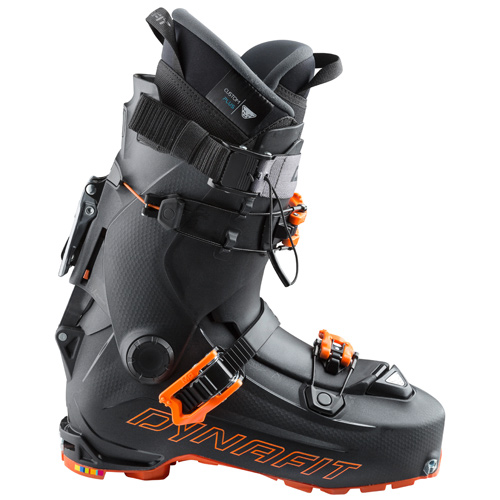In Matchstick Productions’ 2010 film, The Way I See It, Eric “Hoji” Hjorleifson dances down pillows and charges big lines in British Columbia’s backcountry. Turns out, this memorable performance was largely skied on a tech setup, further made possible by the pro skier’s redesign of Dynafit’s Titan boot, later dubbed the Vulcan. That boot, launched for the 2012 winter season, earned a 2013 Editors’ Choice Award, praised by Backcountry testers as an über-light, performance-driven boot.
Fast-forward eight years and, once again, Hjorleifson is working to shift the AT boot conversation. Over the last four years, he, along with Fritz Barthel, boot engineer and inventor of the Low Tech Binding, has developed another evolution in boot equipment.

Launched today, the Hoji Pro Tour boot incorporates what Dynafit calls the Hoji Lock System, a patented interlocking cuff and lower-shell interface resembling that of an alpine boot. This system, which allows the lower and upper-cuff interface to retract when walking via a slider placed between the cuff and the shell, is also designed to eliminate what Hjorleifson considers a more aggravating aspect of his Vulcan: the need to unbuckle and remove the tongue for free ankle mobility while touring.
Hjorleifson and Barthel call this new Franken-boot the “Little Machine,” and I talked with Hjorleifson to learn more about the engineering process, the opportunity to work with Barthel and his reasons for developing the boot.
Here is what he had to say.
This video segment of Hjorleifson is part of the new Matchstick Productions film, Drop Everything – skimovie.com.
The original concept for “Little Machine” was an interlocking cuff with the lower shell, but that kind of interface has to be moved out of the way when walking. Our question was, “How do we make this boot [that’s] made for walking ski well?”
With the “Little Machine,” we pressed the boot together, interlocking the cuff and lower shell. This gives it a progressive alpine-boot flex and feel. Because of this, the boot is relying on the flex of the materials rather than a metal pinhole slot (the mechanism incorporated into many traditional walk modes).
The name “Little Machine” was Fritz’s idea, and I think it’s an accurate way to describe the boot. He said it needed to be a little machine—both locking together and free moving—transitioning those interfaces [via a slider interposed between the cuff and the shell] up and out of the way for the cuff to move when walking. The icing on the cake was integrating the tension control of the upper buckle—you simply reach down above your heel and move the lever for skiing/walking.
The boot is a platform. It’s the first model in a series of boots, and hopefully we’ve done our homework and tested and refined it. If it’s successful, it will be a predecessor for future boots. We’re just at the beginning, even though it has been four years.
It has been almost four years since the first skiable prototype that Fritz and I built in Austria. I had the vision and the rough concept at the beginning and some considerations in how I could make it at the time. I told Fritz about the idea, and he invited me to his place.
I lived there for three or four weeks, and we built the first version of the boot in his shop while I learned to build parts as well as design, utilize and machine them. We pulled a lot of all-nighters on the first prototype and finally got one completed and the other 90-percent finished before I traveled back to Canada.
The theme was to build something and then go ski and film until failure or until the boot would wear down. After a few days I was able to break the first pair. I returned to Europe in the spring to re-design the boot based on the info we could calculate from the failure and to start the second generation.
Once during testing I landed backseat off a big jump and sheared off plastic components. I had to tour 20km to another lodge to get my Vulcans. I’ve put the “Little Machine” through rigorous testing and [what I learned went into the] design of the boot with Fritz. He really brought [design expertise] to the table since I’m not an engineer. He knew how to properly build that system into a product. It was really interesting for me to see that and have that assurance of proper engineering.
Fritz is an amazing mentor. Getting the opportunity to know him and learn was by far the best part of this whole journey. We got to ski together and develop a friendship. For me it was a huge turning point; I had always been messing around, taking parts and thinking, “How can this work?”—kind of cobbling things together like other boot parts and binding components to work on the [walk] mechanism. But actually having the ability to make what you want and think about how you’re going to make it work; I love that. It became a major focus over the past four years, and I really like the process; it was very addictive for my personality.










Awesome! Cant wait to see it in the shops near Tahoe. I love the movement of the instep strap up high, cause I never really buckled the toe area anyways. The idea that one lever release you into hiking mode or into ski mode is delicious. Can t wait , cant wait.!